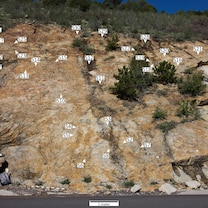The Perseids, considered the best meteor shower of the year, are about to begin
They produce fast, bright streaks in the night sky.
The Perseids, considered by astronomers to be the best meteor shower of the year, are about to begin.
The meteor shower occurs annually from about July 17 to Aug. 23, typically peaking in mid-August, according to the American Meteor Society.
Its "swift and bright" meteors often leave long "wakes" of light and color behind as they streak through the Earth's atmosphere, leading to the best annual display of meteors, astronomers say.
The Perseids are also known for their fireballs, which are larger explosions of light and color that persist longer than an average meteor streak, according to NASA. Fireballs are brighter and originate from larger particles of cometary material.

Under a dark sky, the Perseids can produce between 50 and 100 meteors per hour, according to NASA. And because they occur during the summer, it allows viewers warm nighttime weather to comfortably watch them.
Where do the Perseids come from?
The Perseids originate from the debris left behind by the Comet Swift-Tuttle as it orbits the sun every 133 years.
The large comet, with a nucleus of 16 miles, is estimated to be twice the size of the object hypothesized to have led to the extinction of dinosaurs, according to NASA. It was discovered in 1862 by Lewis Swift and Horace Tuttle and last visited the inner solar system in 1992.

When comets come around the sun, the dust they emit forms a trail, which then manifests as fiery and colorful streaks in the sky. as the debris collides with Earth's atmosphere.
How to watch the Perseid meteor shower
The Perseids can be viewed all over the night sky, but they are best seen from the Northern Hemisphere in the pre-dawn hours, according to NASA.
To find the meteor shower, look toward the constellation Perseus, where the radiant of the Perseids appear to originate from.

For best viewing, NASA advises spectators to lie flat on their back in a region away from light pollution. Meteors should be visible after about 30 minutes, when eyes adjust to the dark.
This year, the meteor shower expected to peak around Aug. 12, according to EarthSky.org.



